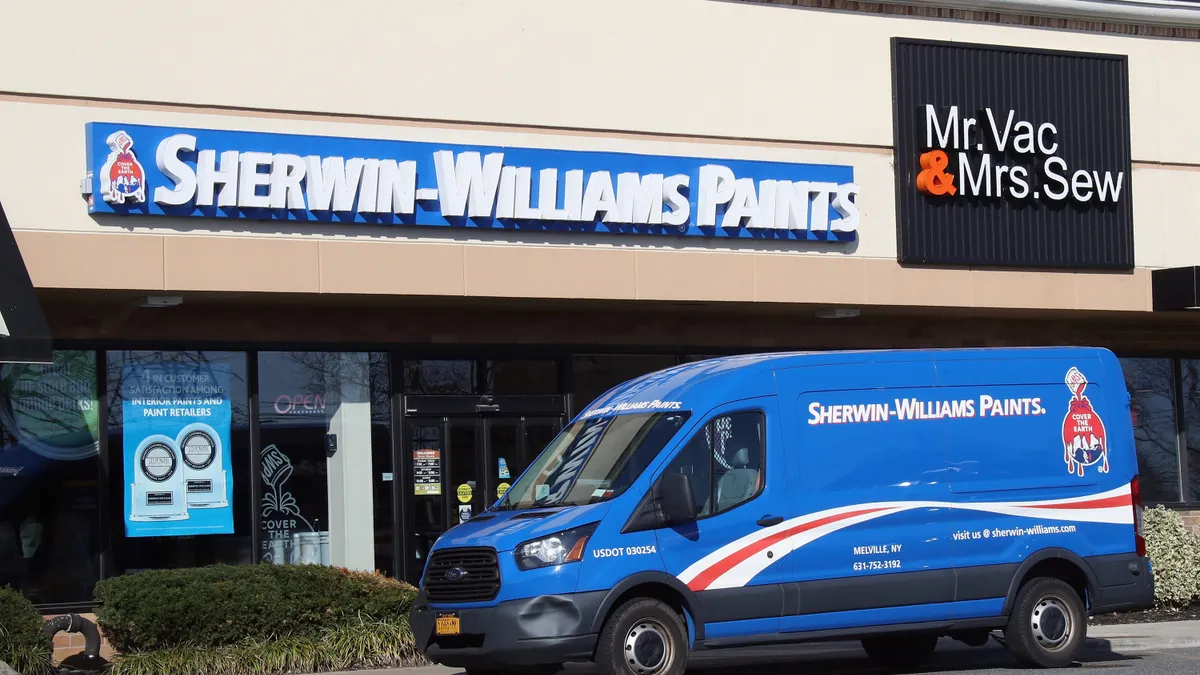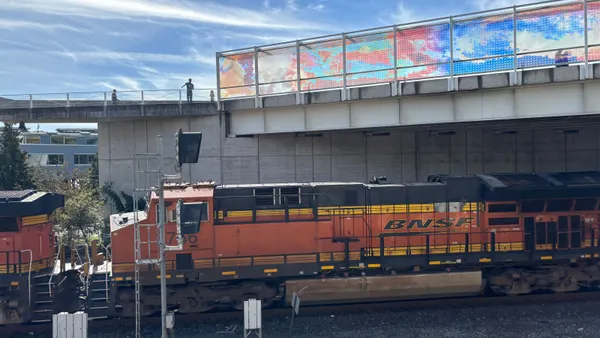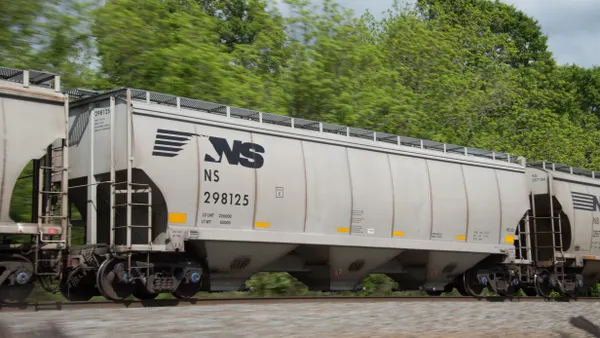Dive Brief:
- Sherwin-Williams has deployed its private fleet of trucks and railcars to speed up suppliers' raw materials deliveries, according to a Q1 earnings call.
- CEO John Morikis said the company is using its "own fleet and tank wagons to supplement suppliers’ delivery capabilities" as logistics bottlenecks constrain Sherwin-Williams' ability to produce paint.
- Logistics delays also have Sherwin-Williams prioritizing certain SKUs and formulations "to make the most of the raw materials that are available to us," said Morikis.
Dive Insight:
Paint makers struggled with production last year after a Texas ice storm and other extreme weather events wreaked havoc on the supply of raw materials such as resin. Raw material availability has improved since then, but transportation snarls are now limiting production levels.
"The supply chain has not completely recovered, as the bottleneck has now largely moved from suppliers’ production to their transportation and logistics," Morikis said.
Labor constraints and transportation issues have limited production across industries. April inventory levels dropped from March as manufacturing activity declined to its lowest point since July 2020, according to the Manufacturing ISM Report on Business released Monday. Supplier deliveries also slowed at an accelerated rate in April, the report found.
Timothy Fiore, chair of the ISM Manufacturing Business Survey Committee, said manufacturing improvement "will be tepid for the rest of the second quarter due to continuing labor issues and the expected impact of recent China lockdowns."
Sherwin-Williams has focused on rebuilding inventories following months of challenges with raw material supply. The company made more architectural paint gallons in March than in any previous month in its history and doesn't "expect lack of raw materials to have a material impact on sales going forward," according to Morikis.
But despite increased inventories, logistics bottlenecks are still creating roadblocks to production. The company's prioritization of SKUs and deployment of its private fleet to assist suppliers has added costs and in some cases new inefficiencies.
"It's a little less efficient than what we would like," said Morikis. "We have this terrific footprint. We want to optimize our supply chain to its fullest. But when it comes down to it, we are going to choose serving our customers."















